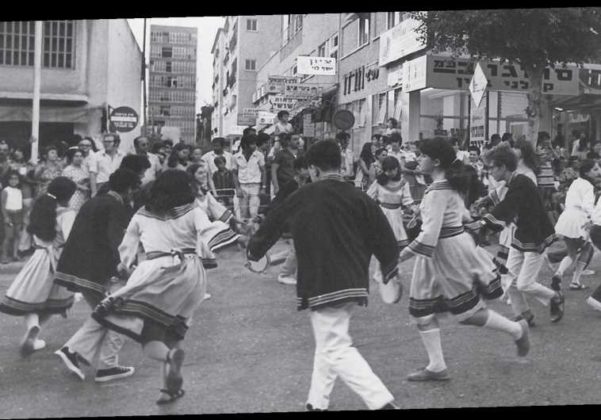You’ve heard of a Passover Seder and maybe a Tu B’shevat Seder. How about an “Israel Seder“?
The idea of a seder (“order”), using a haggadah (a “make-telling” text) to tell a spiritual story, is wired into Jewish life. Jews call ourselves a “People of the Book,” but first we’re a “People of the Story.” For countless generations, Jews self-defined partly by a universally human Master Story – creation, bondage, liberation, revelation, journey, redemption, continuity, change – told through the particular lens of Jewish physical and spiritual history. We do so because re-telling our Master Story keeps re-creating meaning, identity, connectivity and purpose.
That’s why we re-live “our” liberation from Egyptian bondage, even though “we” moderns live long after any ancient slave-mongering pharaoh. As Torah puts it (Exodus 13:8), “On that day” – which also is this day – “tell your [child], ‘I do this because of what God did for me when I came forth from Egypt.'”
A seder raises the sensory stakes of telling our Master Story. All of our senses engage as we gather with others around a table, using words and song (sight and hearing), enjoying symbolic food and drink (sight, smell, taste and touch), asking questions and making it personal, for “us” now and not only “them” then.
Functional MRIs confirm that the more we engage our senses, the more we engage. A seder helps us do that. We don’t just tell our Master Story: symbolically we live it, fully engaged, all our senses, all in. Put another way, according to liturgist Rabbi Sami Barth, “it is through rituals and ‘religious’ ceremonies [like a seder] that we move beyond intellectual and political debate, and engage the heart and soul as partners with the mind and intellect.”
Israel asks this same quality of engagement, hence an Israel Seder. Every Jew traces spiritual lineage and a Master Story to the People of Israel who are the Children of Israel. The modern State of Israel is the most recent chapter of this ongoing Master Story – part fulfillment, part miraculous triumph, part ongoing hope (literally “Hatikvah”), part profound and wrenching struggle. Historically speaking, this chapter is extraordinary not only because Israel exists, but because Jewish life now unfolds as a both/and – both in Israel (in its complexity) and outside Israel (also in complexity).
This chapter of the Master Story is unfolding in ways that transcend and include all politics, whatever one’s sense of the matzav (current Mideast “situation”), whatever might be one’s relationship or lack of relationship with Israel – both as she is now, and as one might wish her to become.
Whatever our politics, in these ways the State of Israel is a geopolitical reflection of profound Jewish spiritual truth: spirituality isn’t just for easy stuff. True spirituality asks us not to fragment or flee from what’s hard: wherever we go, there we are. Our spirituality, our religion and our Master Story must be(come) resilient and robust enough to include it all – and thus to grow, and stretch, and struggle to get there from here. That’s exactly why we hold a seder: to engage and grow and wrestle with our Master Story, and to deepen that Master Story deeper within heart and soul – harder spots to reach that the naturally disputatious mind.
If this seder idea sounds far fetched, consider that we already do much the same for Passover and Tu B’shevat. The Master Story of Passover is hardly pristine: it recounts that God established power and authority at others’ expense. It finds newly freed slaves looting their neighbors. It finds fleeing Israelites celebrating the drowning death of Pharaoh’s army (to Talmud, also “God’s children”), then turning on their liberator and putting others in chains. Many say that today we and countless others worldwide are shackled to all kinds of bondage and servitude that crush the spirit: the Passover liberation is not complete. And does Tu B’shevat’s Master Story of tending the planet sound much better these days?
A seder wrestles, tells, re-tells, stretches and hopefully helps us fulfill the uncompleted Master Story precisely where it doesn’t yet seem to fit. We can do the same with Israel – coming together across even great gulfs of politics to engage all our senses, all our hopes, learning, yearning and wrestling – in service of this ongoing Master Story of becoming ever more whole in service of spirit.
As we focus anew on our Master Story and the upcoming Passover season of renewal, we look also to the following month’s Yom Ha’Atzmaut and Israel’s 69th birthday. Find on the Israel Seder website a “how to” guide, a multimedia library of songs, historical videos and more to bring this part of our Master Story to life. Let this be the year we try an Israel Seder, to continue perfecting our ever-evolving Master Story in heart and soul – and then in the world.
Dedicated to R. Sami Barth and the Israel Seder Project.


